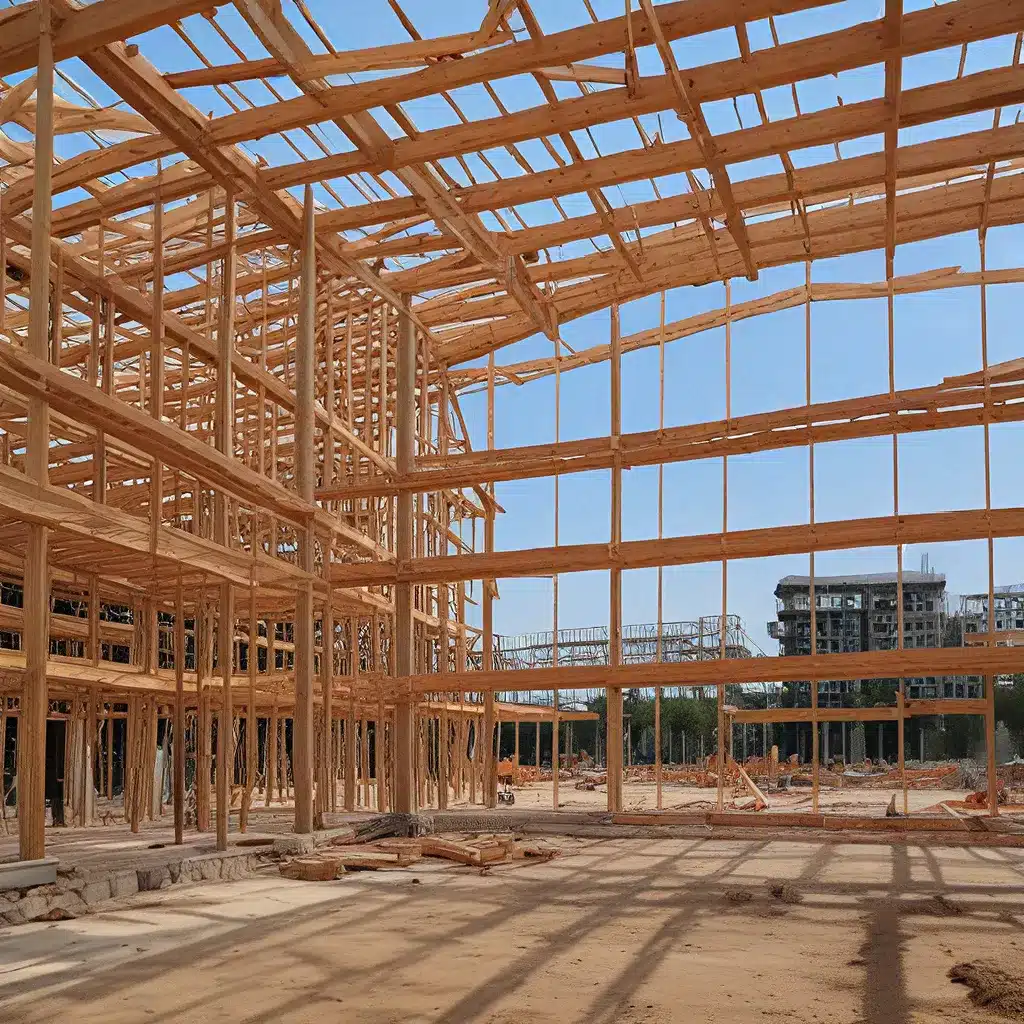
“Alright folks, gather ’round. It’s time to talk about something that’s been weighing heavily on my mind – the state of the construction industry and how we can build a brighter, more sustainable future. Now, I know what you’re thinking: ‘Another lecture on going green?’ Bear with me, my friends, because this ain’t your typical sustainability spiel. We’re about to dive headfirst into some truly innovative approaches that are shaking up the status quo.”
The Concrete Jungle Needs a Makeover
Let’s face it, the construction industry has been a bit of a greedy glutton when it comes to consuming natural resources. In fact, it’s responsible for a whopping 50% of the world’s raw material usage. That’s a staggering statistic, and it’s one that’s been keeping me up at night. But you know what they say, “Where there’s a problem, there’s an opportunity.” And boy, do we have a golden opportunity to transform this industry into a shining beacon of sustainability.
Sustainable construction is the name of the game, and it involves using renewable, recyclable, and eco-friendly materials to reduce energy consumption and toxic waste. It’s a fundamental shift in how we approach building projects, and the benefits are as clear as a freshly polished window.
Breaking Down the Barriers to Sustainability
I’ll admit, the initial costs of incorporating sustainable practices can be a bit daunting. But hear me out, my friends, because the long-term payoffs are nothing short of remarkable. Let’s dive into some of the key advantages of going green in the construction industry:
-
Healthier Homes, Happier Occupants: By using non-toxic materials and employing energy-efficient design, sustainable buildings have been shown to dramatically improve the health and well-being of their occupants. Reduced exposure to harmful chemicals, better air quality, and access to natural light can work wonders for both physical and mental health.
-
Protecting our Planet: With global warming and resource depletion a growing concern, the construction industry has a critical role to play in reducing its environmental impact. Sustainable practices like using renewable materials, implementing water conservation, and minimizing waste can significantly lower a building’s carbon footprint.
-
Economic Boost: The green building movement isn’t just good for the planet – it’s also great for the economy. LEED-certified buildings have proven to have higher resale values, lower operational costs, and greater tenant demand, making them a smart investment for both developers and building owners.
-
Durable and Dependable: Contrary to popular belief, sustainable materials are just as reliable and long-lasting as their traditional counterparts. In fact, many of these eco-friendly alternatives, like biocomposites, are becoming increasingly robust and versatile, without compromising quality or structural integrity.
Embracing the Green Revolution
Now, I know what you’re thinking: “This all sounds great, but where do I even start?” Fear not, my fellow contractors, because the industry is already embracing the green revolution in a big way. Let me share a few of the innovative approaches that are taking the construction world by storm:
Renewable Materials
One of the most exciting developments in sustainable construction is the emergence of a new generation of renewable building materials. We’re talking about things like insulated access doors and panels made from recycled or biodegradable materials. These products not only reduce the environmental impact of construction but also boast impressive performance and aesthetics.
Energy-Efficient Design
Gone are the days when energy efficiency was an afterthought in construction. Today, green architects are leading the charge, designing buildings that harness the power of natural resources like the sun, wind, and water to meet their energy needs. From passive solar heating to geothermal cooling, the options for creating truly sustainable structures are endless.
Sustainable Construction Practices
It’s not just about the materials, my friends. Sustainable construction also involves implementing methods that enhance the overall efficiency of a project. This can include things like waste management, water conservation, and green transportation – all of which contribute to reducing the environmental impact of a building.
The Future Is Green, and It’s Bright
As I look around the industry, I can’t help but feel a sense of excitement and optimism. The tide is turning, and more and more construction firms are embracing the benefits of sustainable practices. From large corporations to individual homeowners, the demand for eco-friendly solutions is growing, and the industry is responding with innovative, forward-thinking approaches.
So, my friends, the time has come to roll up our sleeves and get to work. Let’s be the ones who lead the charge in rebuilding the construction industry, one sustainable practice at a time. Who’s with me? Let’s go out there and show the world that the future of construction is green, and it’s brighter than ever before.
Reading General Contractor is here to help you navigate this exciting new landscape of sustainable construction. Whether you’re a seasoned pro or just starting out, we’ve got the expertise, resources, and passion to guide you on your journey towards a more eco-friendly future. Let’s roll up our sleeves and get to work, shall we?
Related posts:
No related posts.




